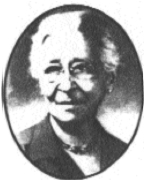 Revised October 2010 – Community Concerns
Revised October 2010 – Community Concerns
In 1985 Enrique Kiki Camarena was kidnapped, brutally tortured, and murdered by Mexican drug traffickers. His tragic death opened the eyes of many Americans to the dangers of drugs and the international scope of the drug trade.
Shortly after Kiki’s death, Congressman Duncan Hunter and Kiki’s high school friend Henry Lozano launched “Camarena Clubs” in Kiki’s hometown of Calexico, Calif. Hundreds of club members pledged to lead drug-free lives to honor the memory of Kiki Camarena. These pledges were delivered to first lady Nancy Reagan at a national conference of parents combating youth drug use. Several state parent organizations then called on community groups to wear red ribbons during the last week of October as a symbol of their drug-free commitment. In 1988, the National Family Partnership (NFP) coordinated the first National Red Ribbon Week with President and Mrs. Reagan serving as honorary chairpersons.
How to Celebrate Red Ribbon Week:
- The NFP estimates that more than 80 million people participate in Red Ribbon events each year.
- The campaign is a unified way for communities to take a stand against drugs, and to show intolerance for illicit drug use and the consequences to all Americans.
- Schools, businesses, the faith community, media, families, and community coalitions join together to celebrate Red Ribbon Week in many ways, such as: sponsoring essay and poster contests; organizing drug-free races; decorating buildings in red; handing out red ribbons to customers; holding parades or community events; and by publicizing the value of a drug-free, healthy lifestyle.
Additional Resources
California Department of Education (www.cde.ca.gov/ls/he/at)
Community Alliances for Drug Free Youth (CADFY) (www.CADFY.org)
California Friday Night Live Partnership (www.fridaynightlive.org)
U.S. Drug Enforcement Administration (DEA) (www.dea.gov and www.justthinktwice.com)
Partnership for a Drug-Free California (www.drugfree.org)
Sundt Memorial Foundation (www. sundtmemorial.org)
The Enrique S. Camarena Educational Foundation (www.CamarenaFoundation.org)
Time to Talk (Partnership for a drug free America website directed at parents) (www.timetotalk.org)
Today, schools and communities throughout the nation create activities and sponsor media campaigns during Red Ribbon Week to increase the public’s awareness about the problems caused by substance abuse and promote research-based prevention strategies and programs throughout the year.
~ Community Alliances for Drug Free Youth (CADFY), www.cadfy.org
 Alice McLellan Birney
Alice McLellan Birney Phoebe Apperson Hearst
Phoebe Apperson Hearst Selena Sloan Butler
Selena Sloan Butler